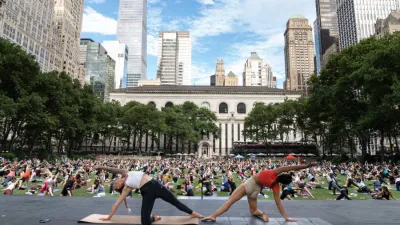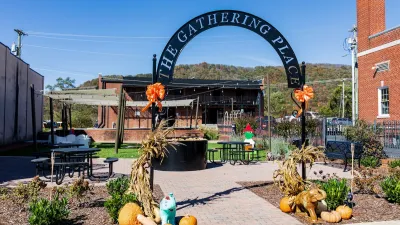A federal program works with rural communities to develop their assets and resources and build a sense of place.

As part of a program called the Citizens’ Institute on Rural Design (CIRD) from the National Endowment for the Arts and the Housing Assistance Council, Spring Grove, Minnesota used resident input to create plans for a new community center, focusing on facilities that would help local youth and keep them anchored in the community.
As Kristi Eaton explains in The Daily Yonder, “CIRD focuses on communities with populations of 50,000 or less, and the goal is to enhance the quality of life and economic vitality of rural America through planning, design, and placemaking.”
According to Shonterria Charleston, the director of Technical Assistance and Training at the Housing Assistance Council, “It really is intended to empower local citizens to capitalize on the unique local and regional assets in order to guide the civic development as well as future design of their communities.”
These efforts, said Charleston, are “working towards preparing communities to be ready and competitive for arts and design-related state and federal funding opportunities,” explaining that “resources and partnerships are…two things that will either make or break any development initiative.”
FULL STORY: Rural Renewal: Placemaking In Small Towns Through Good Design

Manufactured Crisis: Losing the Nation’s Largest Source of Unsubsidized Affordable Housing
Manufactured housing communities have long been an affordable housing option for millions of people living in the U.S., but that affordability is disappearing rapidly. How did we get here?

Americans May Be Stuck — But Why?
Americans are moving a lot less than they once did, and that is a problem. While Yoni Applebaum, in his highly-publicized article Stuck, gets the reasons badly wrong, it's still important to ask: why are we moving so much less than before?

Using Old Oil and Gas Wells for Green Energy Storage
Penn State researchers have found that repurposing abandoned oil and gas wells for geothermal-assisted compressed-air energy storage can boost efficiency, reduce environmental risks, and support clean energy and job transitions.

Updating LA’s Tree Rules Could Bring More Shade to Underserved Neighborhoods
A new USC study finds that relaxing Los Angeles’ outdated tree planting guidelines could significantly expand urban tree canopy and reduce shade disparities in lower-income neighborhoods, though infrastructure investments are also needed.

California's Canal Solar Projects Aim to Conserve Resources and Expand Clean Energy
California’s Project Nexus has begun generating electricity from solar panels installed over irrigation canals, with researchers and state agencies exploring statewide expansion to conserve water and boost clean energy production.

HHS Staff Cuts Gut Energy Assistance Program
The full staff of a federal program that distributes heating and cooling assistance for low-income families was laid off, jeopardizing the program’s operations.
Urban Design for Planners 1: Software Tools
This six-course series explores essential urban design concepts using open source software and equips planners with the tools they need to participate fully in the urban design process.
Planning for Universal Design
Learn the tools for implementing Universal Design in planning regulations.
Heyer Gruel & Associates PA
City of Moreno Valley
Institute for Housing and Urban Development Studies (IHS)
City of Grandview
Harvard GSD Executive Education
Salt Lake City
NYU Wagner Graduate School of Public Service
City of Cambridge, Maryland





























